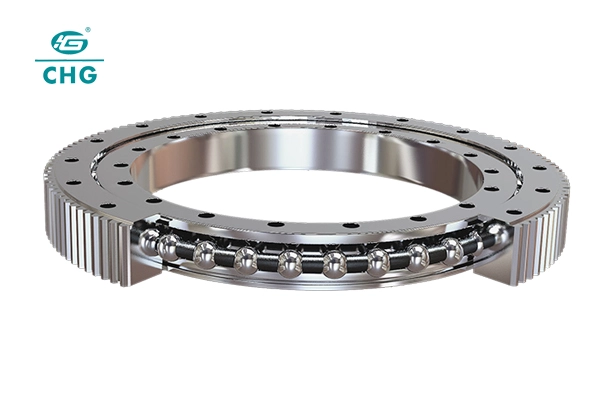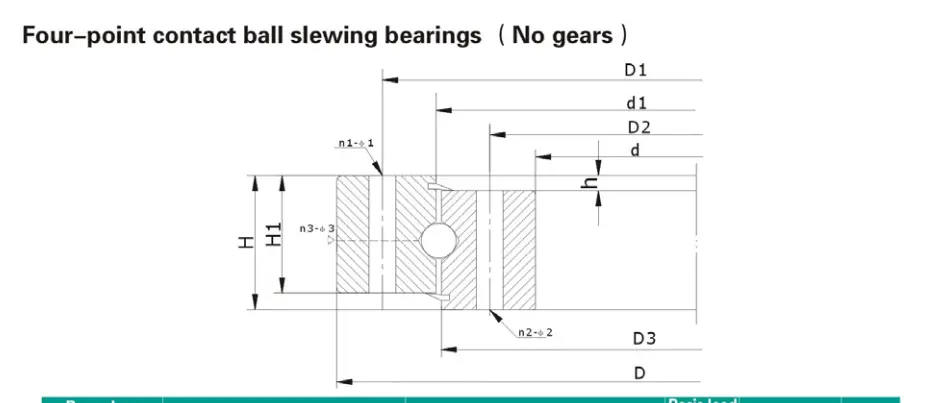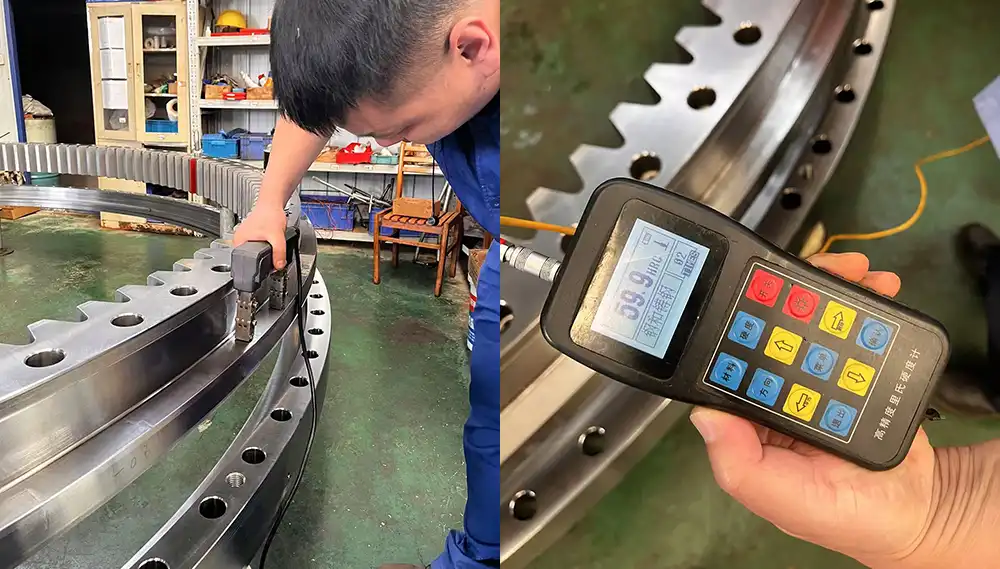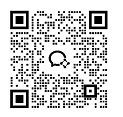How Do You Choose the Right Size for a Single Row Ball Slewing Bearing?
Single row ball slewing bearings are critical components in numerous industrial and engineering applications, serving as essential rotating mechanisms that support heavy loads while enabling smooth rotational movement. Selecting the appropriate size is a complex process that requires careful consideration of multiple technical parameters, load characteristics, and operational environments. This article aims to provide a comprehensive guide to help engineers and technical professionals make informed decisions when choosing the right size for a single row ball slewing bearing.

What Are the Key Factors That Determine the Sizing of Single Row Ball Slewing Bearings?
The selection of an appropriate single row ball slewing bearing size involves a multifaceted approach that goes beyond simple dimensional measurements. Engineers must conduct a comprehensive analysis of various critical factors to ensure optimal performance, reliability, and longevity of the bearing system.

Load characteristics represent the foundational element in determining bearing size. These include static load, dynamic load, moment loads, and the distribution of forces across the bearing's surface. Each type of load places unique stress on the bearing, requiring precise calculations to prevent premature wear, deformation, or catastrophic failure.
Static load capacity refers to the maximum load a bearing can support without experiencing permanent deformation. This parameter is crucial when the bearing experiences minimal rotation but must support substantial weight. Engineers typically use ISO standard calculations to determine the appropriate static load rating, considering factors such as material strength, ball contact geometry, andrace design.
Dynamic load capacity represents the bearing's ability to withstand repeated loading during continuous rotation. This metric is especially critical for applications involving frequent movement and varying load conditions. Manufacturers provide standard calculation methods that incorporate rotation speed, load direction, and expected operational lifecycle to recommend appropriate bearing dimensions.
Moment loads, which include radial, axial, and tilting moments, play a significant role in sizing selection. These complex loading conditions require sophisticated mathematical models that account for the bearing's geometric properties and expected stress distribution. Advanced computational fluid dynamics and finite element analysis tools have become indispensable in accurately predicting bearing performance under diverse loading scenarios.
Environmental considerations also substantially influence bearing size selection. Temperature ranges, exposure to contaminants, corrosive environments, and potential vibration levels must be meticulously evaluated. For instance, marine applications might require larger bearings with specialized sealing mechanisms, while precision robotic systems demand extremely tight tolerances and minimal dimensional variations.

How Do Different Industries Impact Single Row Ball Slewing Bearing Sizing Strategies?
Industrial applications demonstrate remarkable diversity in their slewing bearing requirements, with each sector presenting unique challenges that directly influence sizing methodologies. Understanding these sector-specific nuances is essential for selecting the most appropriate bearing configuration.
The construction and heavy machinery industry represents a prime example of complex bearing sizing requirements. Excavators, cranes, and large-scale machinery demand slewing bearings capable of supporting immense loads while maintaining precise rotational accuracy. Here, sizing strategies extend beyond simple load calculations to include dynamic performance predictions, expected operational cycles, and potential load eccentricities.

Renewable energy sectors, particularly wind turbine applications, present particularly demanding environment for single row ball slewing bearings. Wind turbine pitch and yaw mechanisms require bearings that can withstand extreme environmental conditions, including high wind speeds, temperature fluctuations, and constant directional changes. Sizing in these applications involves intricate computational models that simulate potential stress scenarios and predict long-term performance characteristics.
Maritime and offshore engineering sectors introduce additional complexity to bearing sizing. Marine environments subject slewing bearings to corrosive saltwater, extreme pressure differentials, and continuous movement. Sizing strategies must incorporate advanced material selection, specialized coatings, and comprehensive sealing technologies to ensure reliable performance.
Robotic and precision manufacturing systems demand microscopically precise bearing sizing. These applications require bearings with extremely tight tolerances, minimal runout, and exceptional rotational smoothness. Sizing calculations in these domains involve nanometer-level precision and sophisticated computational modeling techniques.
What Advanced Technologies Are Transforming Single Row Ball Slewing Bearing Sizing Methodologies?
Technological advancements are revolutionizing how engineers approach single row ball slewing bearing sizing, introducing unprecedented levels of precision and predictive capabilities. Digital transformation and computational technologies are driving significant improvements in design, selection, and performance optimization.
Artificial intelligence and machine learning algorithms are emerging as powerful tools in bearing sizing methodologies. These advanced computational techniques can analyze vast datasets, identifying subtle correlations and performance patterns that traditional calculation methods might overlook. By integrating historical performance data with real-time operational parameters, AI models can generate more accurate sizing recommendations.
Finite element analysis (FEA) has become an indispensable technology in bearing design and sizing. These sophisticated computational tools allow engineers to create highly detailed digital simulations of bearing performance under various load conditions. FEA enables comprehensive stress distribution analysis, thermal behavior prediction, and potential failure mode identification before physical prototyping.
Advanced sensor technologies and Internet of Things (IoT) integration are transforming bearing sizing from a static, one-time calculation to a dynamic, continuously optimized process. Smart bearings equipped with embedded sensors can provide real-time performance data, enabling predictive maintenance and allowing for more precise sizing recommendations based on actual operational conditions.
Additive manufacturing techniques are expanding material possibilities in bearing design, allowing for complex geometries and customized material compositions that were previously impossible. These technologies enable the creation of bearings with optimized internal structures, improved load distribution characteristics, and enhanced performance metrics.
Conclusion
Selecting the right size for a single row ball slewing bearing represents a sophisticated engineering challenge that requires comprehensive technical knowledge, advanced computational tools, and a deep understanding of specific application requirements. By considering load characteristics, industry-specific challenges, and emerging technological innovations, engineers can make informed decisions that optimize bearing performance and reliability.

Luoyang Huigong Bearing Technology Co., Ltd. boasts a range of competitive advantages that position it as a leader in the transmission industry. Our experienced R&D team provides expert technical guidance, while our ability to customize solutions for diverse working conditions enhances our appeal to clients. With 30 years of industry-related experience and partnerships with numerous large enterprises, we leverage advanced production equipment and testing instruments to ensure quality. Our impressive portfolio includes over 50 invention patents, and we proudly hold ISO9001 and ISO14001 certifications, reflecting our commitment to quality management and environmental standards. Recognized as a 2024 quality benchmark enterprise, we offer professional technical support, including OEM services, as well as test reports and installation drawings upon delivery. Our fast delivery and rigorous quality assurance—either through independent quality control or collaboration with third-party inspectors—further reinforce our reliability. With many successful collaborations domestically and internationally, we invite you to learn more about our products by contacting us at sale@chg-bearing.com or calling our hotline at +86-0379-65793878.
References
1. ISO 281:2007 - Rolling bearings - Dynamic load ratings and rating life
2. SKF Bearing Handbook, 2019 Edition
3. TIMKEN Bearing Design Engineering Manual
4. Journal of Tribology, Advanced Bearing Design Techniques, 2022
5. International Journal of Mechanical Sciences, Computational Bearing Performance Analysis
6. Wind Energy Engineering: A Holistic Approach, Wiley Publications
7. Robotics and Computer-Integrated Manufacturing, Precision Bearing Technologies
8. Offshore Technology Conference Proceedings, Marine Bearing Applications
9. IEEE Transactions on Industrial Electronics, Smart Bearing Technologies
10. Advanced Materials and Manufacturing Techniques in Bearing Design, Springer Publications

